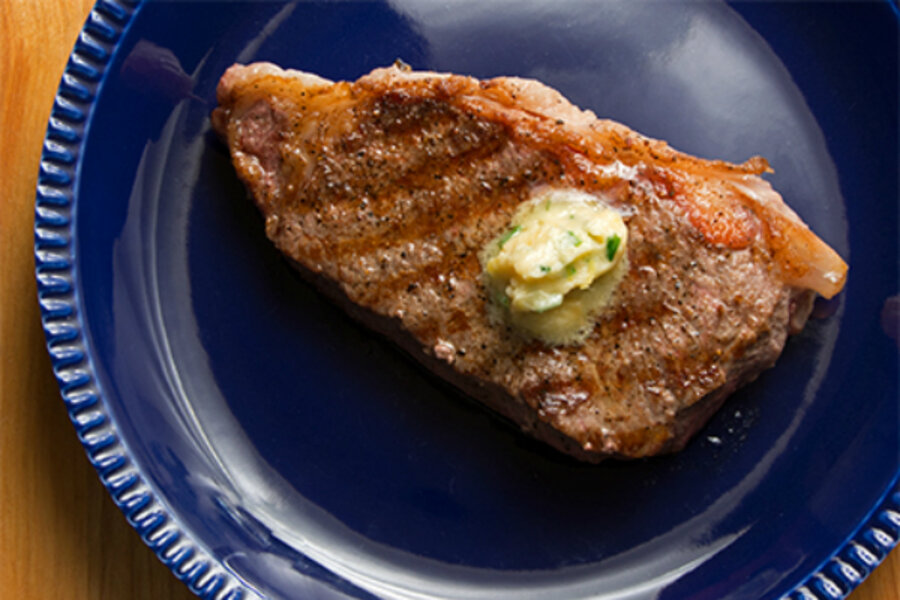Miso chive butter
Loading...
Well, of course the Japanese discovered the fifth taste sensation, umami. They’ve invented so many foods and ingredients that deliver it. Soy sauce is probably the best known example; more than mere saltiness, it adds what is aptly described as “a pleasant savory taste.” Another favorite of ours is miso paste.
Miso is a traditional Japanese seasoning made from fermented soybeans. It is used to add a meaty quality to broths and sauces (along with plenty of salt). And it’s a key ingredient in the simple, satisfying miso soup often served as a starter in Japanese restaurants. Marion makes a version of it that is especially comforting when one of us is under the weather.
In Asian markets, you will find white, red and sometimes yellow miso paste. The white is the is most delicate and has a hint of sweetness. The red is the most potent. We always have white miso in the house and frequently also have the red. For this compound butter, I chose white miso. It works more as an ensemble player with the butter, chives and lemon juice and zest and doesn’t overpower them.
Compound butters – butters mixed with fresh herbs, aromatics, citrus and possibly wine – are a classic French tool for adding something extra to meats and vegetables. This recipe makes more miso chive butter than you need for a couple of steaks. I’m looking forward to trying the leftovers on fish or green beans or even spread on toast.
Grilled Steak with Miso Chive Butter
Serves 2, with leftover compound butter
1 stick unsalted butter, at room temperature
2 tablespoons white miso paste, at room temperature
1 tablespoon minced chives (see Kitchen Notes for substitutes)
1 teaspoon minced lemon zest
1-1/2 teaspoons lemon juice
2 New York strip steaks, about 8 ounces each and 1 inch thick
canola oil
salt and freshly ground black pepper
About 1/2 hour before you’re ready to cook, take the steaks out of the fridge to come to room temperature.
1. Prepare the miso chive butter. Put butter, miso pastes, chives, lemon zest and juice in a bowl. Using a fork, mix until well combined. Set aside.
2. Cook the steaks. You can grill them outdoors, and they will be amazing with the butter. I cooked them in a grill pan indoors. Brush steaks with some canola oil. Season generously with pepper, but use a light hand with the salt—the miso paste adds plenty to the butter. Heat a grill pan over medium-high flame and brush with oil. Place steaks in pan and cook undisturbed for 4 minutes. Turn and cook on the second side for 3 minutes for medium rare.
3. Serve. Transfer steaks to plates and top with a good dollop of the miso chive butter, a half tablespoon or so. You can pass the remaining butter at the table if you like.
Kitchen Notes
No chives? Mince some green scallion tops instead. You can also substitute minced shallot, but it won’t be quite as bright. Some recipes also call for minced garlic, but I think that would just take over.
Related post at Blue Kitchen: Potage Crécy: French Carrot Soup






